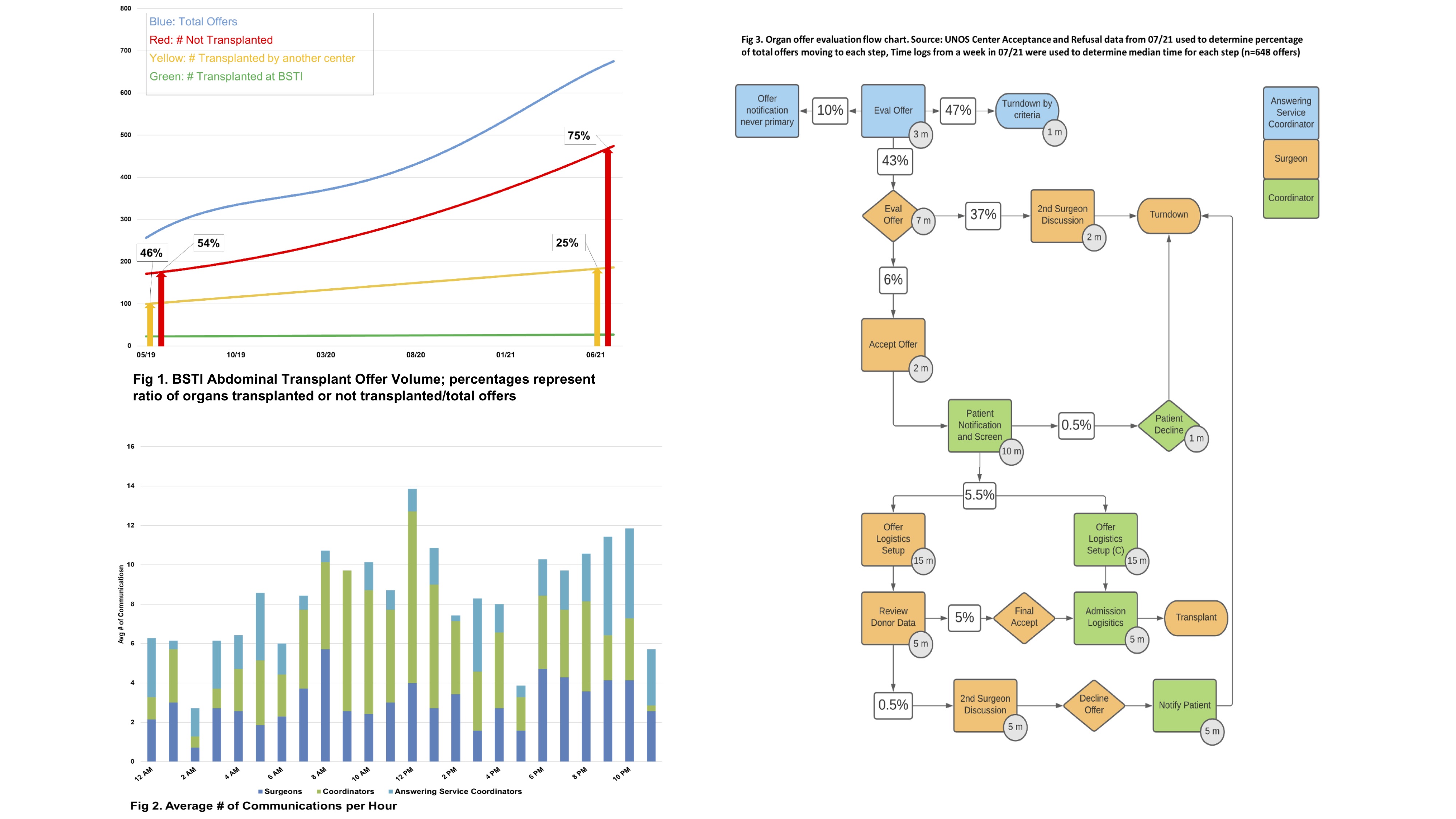A Single Center Analysis of Organ Offers and Workload for Liver and Kidney Allocation
Baylor University Medical Center, Dallas, TX
Meeting: 2022 American Transplant Congress
Abstract number: 598
Keywords: Allocation, Liver, Organ Selection/Allocation, Resource utilization
Topic: Clinical Science » Public Policy » 21 - Non-Organ Specific: Public Policy & Allocation
Session Information
Session Time: 8:25am-9:30am
 Presentation Time: 8:30am-8:45am
Presentation Time: 8:30am-8:45am
Location: Hynes Veterans Auditorium
*Purpose: UNOS/OPTN transitioned to Acuity Circles allocation for kidneys and livers which has increased the complexity of the network of organ procurement organizations (OPOs) and transplant centers. Moreover, there is increased pressure on OPOs to allocate organs. In this study, we hypothesized that allocation changes and regulatory pressure have increased organ offers and program workload.
*Methods: We collected center-specific organ offer volume data from 05/2019 – 07/2021 using the UNOS Center Acceptance and Refusal Evaluation. Workload metrics of time and number of communications for organ offers were collected during a representative week.
*Results: The number of offers per month increased 134% (270/month to 631/month) while the number of organs transplanted remained stable. The ratio of organs transplanted to total offers decreased from 46% to 25%, while the ratio of organs not transplanted to total offers increased from 54% to 75% (Fig 1). We found that surgeons work on 51% of total offers, center coordinators work on 17% of total offers, and answering service coordinators work on 100% of total offers. In a single week, surgeons made 505 distinct communications, center coordinators made 590 distinct communications, and answering service coordinators made 318 distinct communications translating to an average of 3, 4, and 2 communications/hour, respectively (Fig 2). Between November 2019 and July 2021, surgeons, center coordinators, and answering service coordinators workload increased by an estimated 97% (Table 1).
*Conclusions: We found an increase in organ offers and workload over time, which provides impetus to develop strategies to avoid logistical inefficiencies on a center and national level. In particular, the amount of offers for organs never transplanted has substantially increased, and if this is a national trend, offers for untransplantable organs is an immense source of wasted time, effort and ultimately, cost that must be remedied.
| Nov 2019 | July 2021 | |||||
| # Offers | # Communications | Time worked(min) | # Offers | # Communications | Time worked(min) | |
| Surgeons | 167 | 838 | 1677 | 330 | 1652 | 3304 |
| Center Coordinators | 55 | 1398 | 3439 | 110 | 2754 | 6774 |
| Answering Service Coordinators | 289 | 868 | 2316 | 570 | 1710 | 4561 |
To cite this abstract in AMA style:
Reddy V, Ma T, Ruiz R, Fernandez H, Bayer J, Onaca N, Martinez E, Gupta A, Lee S, McKenna GJ, Testa G, Wall A. A Single Center Analysis of Organ Offers and Workload for Liver and Kidney Allocation [abstract]. Am J Transplant. 2022; 22 (suppl 3). https://atcmeetingabstracts.com/abstract/a-single-center-analysis-of-organ-offers-and-workload-for-liver-and-kidney-allocation/. Accessed December 26, 2025.« Back to 2022 American Transplant Congress

